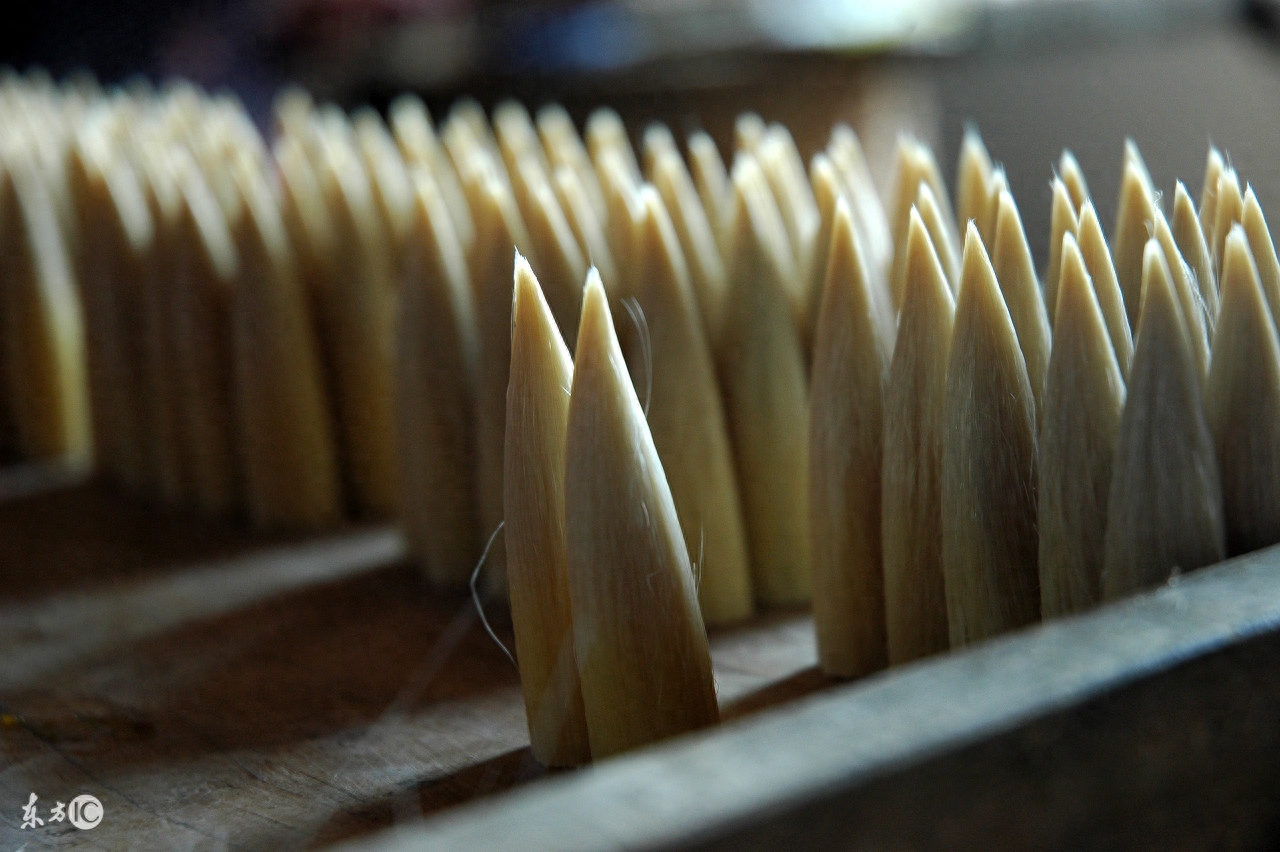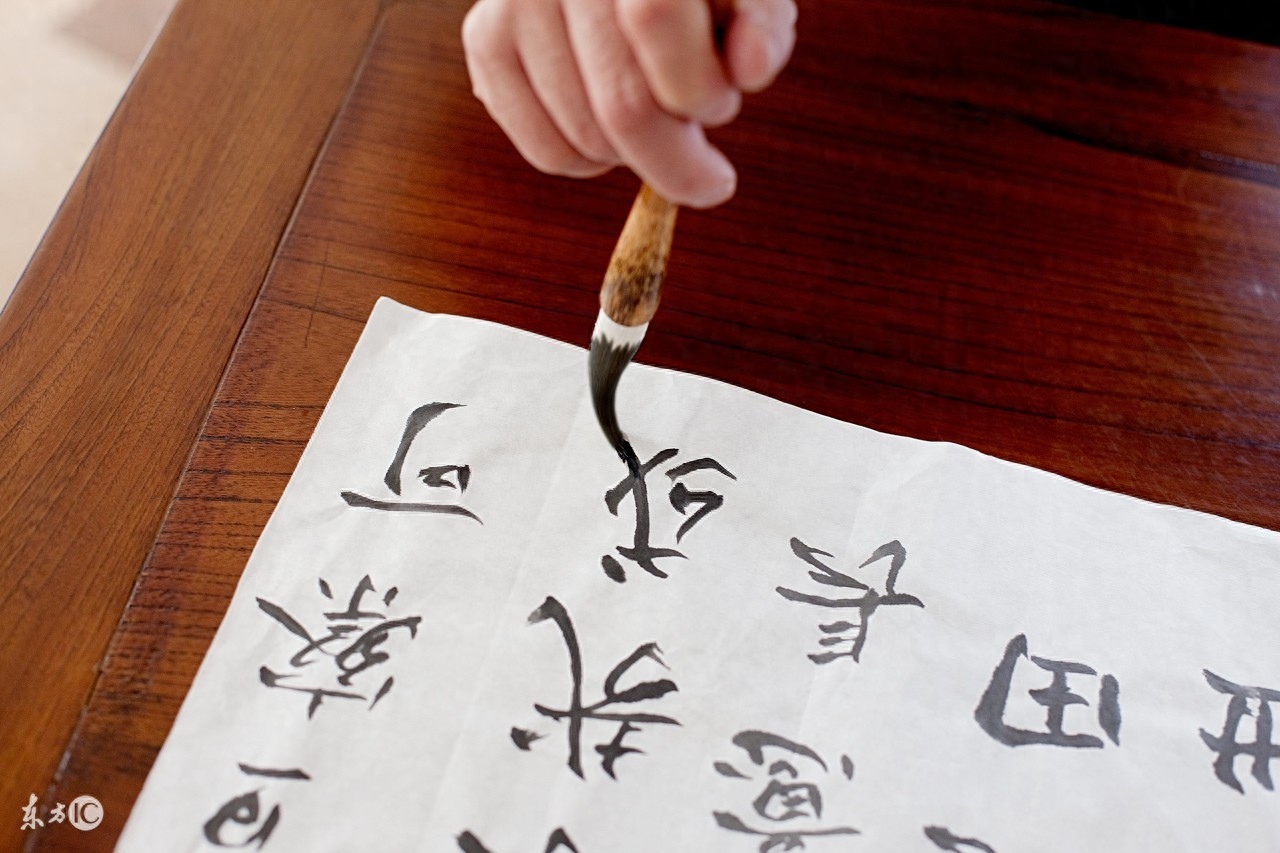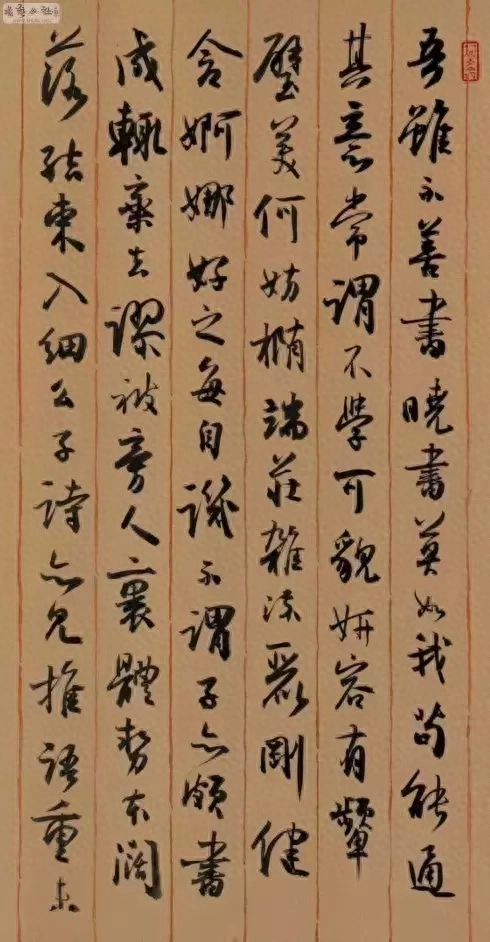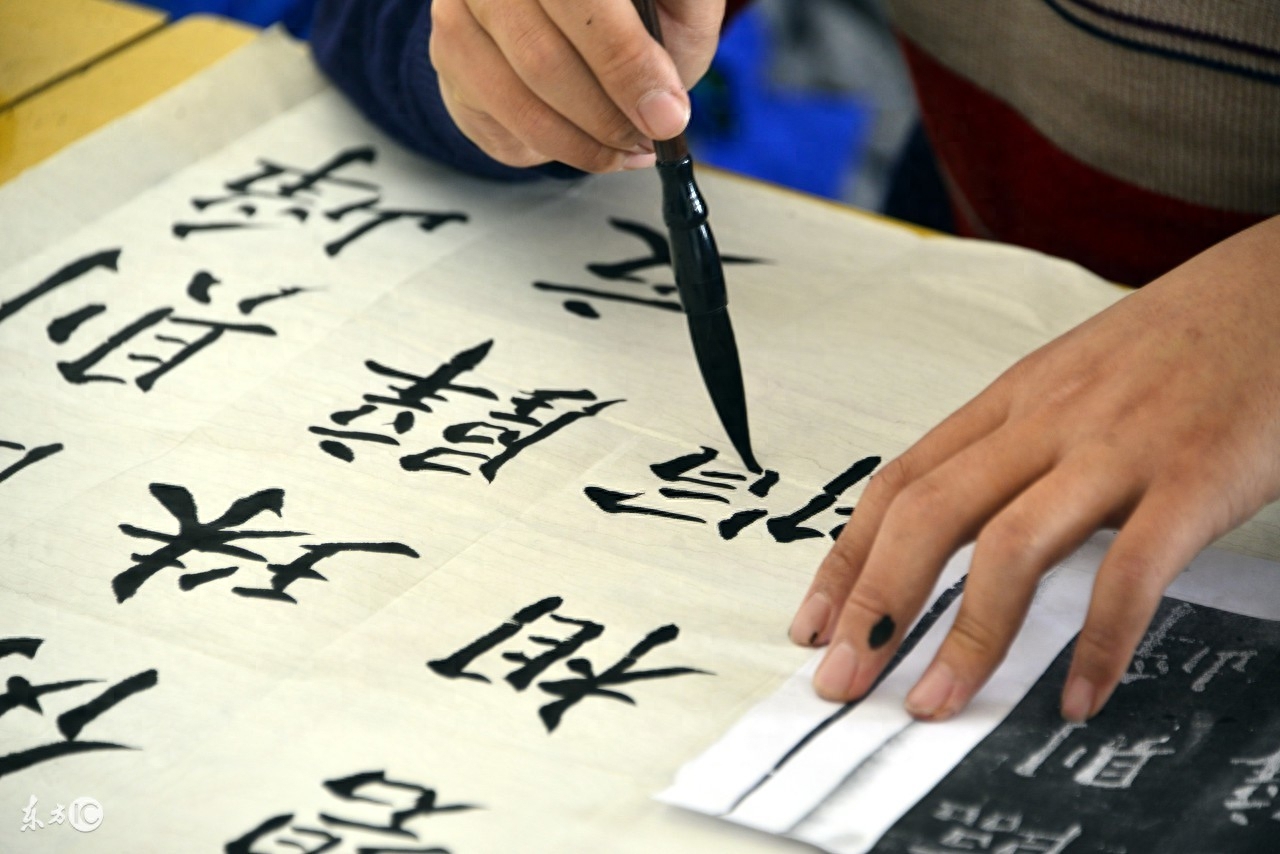There are many ways to use the pen in running script, which have the characteristics of flexibility, flexibility, diversity and so on. Therefore, it is crucial to master the writing method of running script. The proficiency of using the pen is directly related to the quality of writing.
1. Use it appropriately. When using a pen for running script, it is generally recommended to use only one-third of the full length of the stroke, and the heaviest stroke should not exceed one-half. In this way, it can be pressed down and lifted up when writing. Of course, this is not absolute. People who like to write with short-edge pens and long-edge pens are often not restricted by this restriction. They may use full-edge or sharp-edge pens. As long as they are properly mastered, they can achieve what Liang said in "Pingshu Tie" As required: "The pen should be firm and firm, and it should be able to jump. Don't let the pen stick to the paper." If you use small hair to write large characters, you will be stretched and look haggard. The fatness and thinness of the characters are often closely related to the size and depth of the pen used. If the pen is used too much, the strokes will be rigid, flat, superficial and lose their original meaning.

2. It is appropriate to write slowly and quickly. The speed of writing in running script cannot be generalized. It should be said that it is either slow or fast. It also depends on the needs of the entire text. Even if it is a single word, it can be as fast as the wind, or it can be as slow as the same boat. Therefore, the slow speed of running calligraphy cannot only be regarded as medium speed, nor can it be regarded as speeding up urgent writing. It is better to be calm and calm, to use one's heart to express one's feelings. The Qing Dynasty's "Secrets of Calligraphy" stated: "If you can use the pen, you will be a famous calligrapher, and your pen must be lively and interesting."

3. The pen is delivered. When using a pen in running script, you must achieve "pen-by-stroke delivery". The so-called "pen-by-stroke delivery" means that during the operation of a stroke, the tip of the pen must be in place. The belly of the pen must not reach the end of the stroke before the tip of the pen reaches the end. Pick it out or fold it out halfway. This is the key to lifting the strokes. The effort in delivering this pen comes from the skill of regular calligraphy. Otherwise, if the strokes are not delivered properly, the quality of the strokes will be poor.

4. If you want to be horizontal, be vertical first; if you want to be vertical, be horizontal first. The starting strokes of horizontal and vertical paintings, regardless of whether they are hidden or exposed, are consistent with the principles of regular rules. When starting the strokes in the horizontal strokes that do not follow the exposed edges of the upper strokes, special attention must be paid not to use too many pointed pens to prevent the strokes from being thin and chipped, but to make the strokes full and thick. When writing vertical paintings, you should first cut to the right, and then turn straight to avoid being too harsh.
5. The thread is not thick. Jiang Kui pointed out in "Xu Shu Pu": "The dot painting is all heavy, and the non-stippling is light." If it is too rough, it will appear to be overwhelming and continuous.

6. Turning forward like a tendon. To turn the edge, you turn the pen with your wrist, so that the edges of the edge are turned into lines without edges and corners, that is, "turning to form a circle". For example, when writing the words "ye", "wei", "de", "er", etc., the main pen or hook pen should turn the tip to achieve the effect of a tendon ring, with a three-dimensional effect.
7. The pen is spread vertically. That is to say, you should boldly put the ink on the paper and use it vertically and horizontally, so as to achieve the artistic effect of unrestrained momentum and flexible pen posture. In ancient times, Zhu Yunming, Xu Wei, Chen Daofu, Wang Duo, Fu Shan, Zhang Ruitu and others made good use of this method.

8. Changes in matching. The last stroke of the previous character is the stroke that immediately follows the first stroke of the next character. Pay attention to the change of the first stroke. Try not to have the same strokes in one article. In a piece of running script work, the edge can play a role in changing postures and producing rhythm and changes.
9. Take the pen lightly. In the structure of the characters, some of the various strokes are connected left and right, some are connected up and down, and some are connected crosswise. They all have a certain "joint" position and writing method, because they are related. It is not advisable to apply heavy ink on the joints. Instead, a light and agile pointed pen is used to connect the joints, so it is also called "point joint". The pen must be used lightly and dexterously.

10. The pen is smooth. When writing certain characters, small coils and large loops are used. For example, "emperor" and "dai" are written in large and small loops, and the outer surrounding structure of "国" is written in a large loop shape. These are all called wai pen. Or write back. When writing this stroke, you must master the forward transformation of the edges in order to achieve the effect of strong and smooth lines. This method is mostly used in cursive writing.

11. The writing is vivid. It is an action in which during the writing process, the direction of movement is changed according to the needs of the body shape, and the tip of the pen is turned over to continue running quickly. It is mostly used for turning the square pen, and is used in conjunction with the folding pen to draw edges and corners with the turning pen to avoid stiff pen disease. The brush turning method is difficult to master and should be practiced and experienced more.
12. Go with nature. That is, don’t pretend to tremble when using the pen. The brilliance of calligraphy lies in embodying nature through human effort, which is a very high level. Nature is the nature of human beings to do their best to adapt to natural conditions, so the significance and value of the use of techniques lies in the nature reflected in the creation of calligraphy. Using a pen that is old and sharp is a sign that "at the time of general meetings, people and books are both old", and it is not a deliberate act.
Articles are uploaded by users and are for non-commercial browsing only. Posted by: Lomu, please indicate the source: https://www.daogebangong.com/en/articles/detail/xing-shu-yong-bi-fang-fa-12-tiao.html

 支付宝扫一扫
支付宝扫一扫 
评论列表(196条)
测试